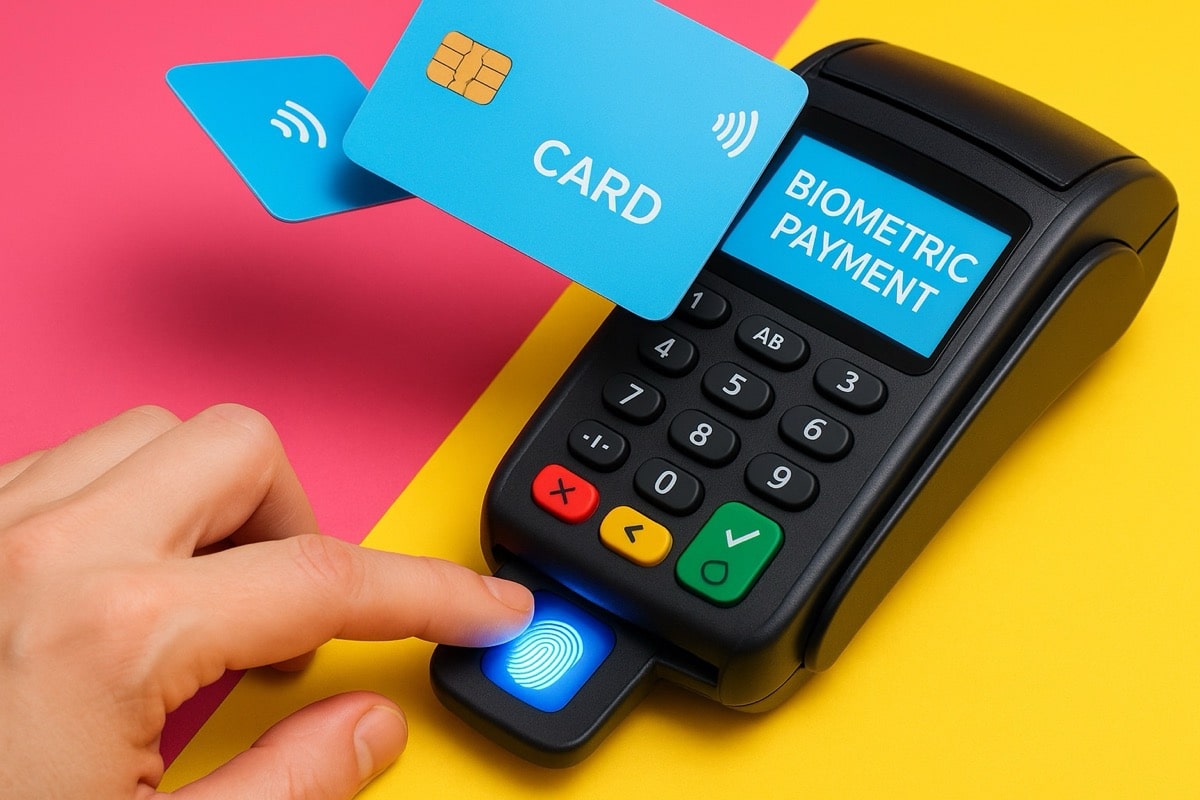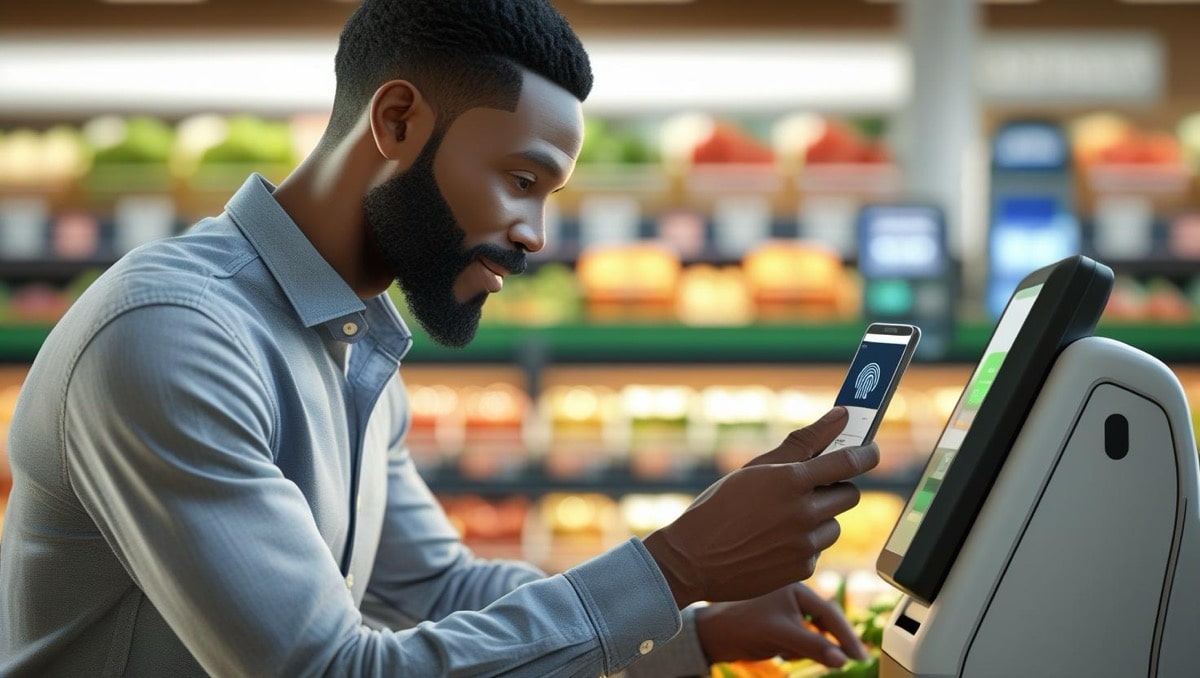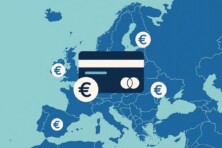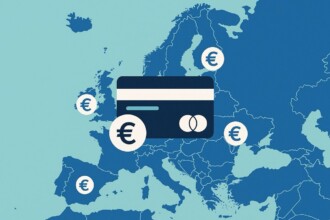It is predicted that, as soon as 2030, every one in four people globally will be using biometric tech to secure payments, while digital identity verification will pass traditional identity verification in volume. Why are biometric payments so popular, and why has their adoption accelerated in recent years? This article sheds light on everything you need to know about paying with your face, palms, and fingerprints.

While writing this article, I found it challenging to recall the last time I made a point-of-sale or even an online payment without using my biometric data. In fact, I would be genuinely struggling to do that if I were to, as fingerprints have long replaced passwords in my online banking journey.
The same situation is surely common for many people globally, who use biometric payments regularly without a shadow of doubt. The number of biometric payments users will accelerate this year, as the world’s biggest instant payment system, India’s UPI is enabling biometric authentication for UPI apps like PhonePe, Paytm, and GPay.
However, for many people in the world, the reality is different. Billions of shoppers have no idea what biometric payments are, how and where to use them, or if they’re even secure enough to start wondering about adopting this innovative tech.
Let’s debunk some myths about biometric payments and see what the fintech industry has to offer in this realm.
What Are Biometric Payments
Whenever a payment involves scanning a part of your body with unique biometric information (fingerprints, face image, palm veins pattern, iris details, etc), we deal with biometric payments.
Simply speaking, biometric payments let you pay with your own biological and bodily characteristics — using your fingerprint, face, palm, or even your voice instead of a card or PIN. It’s a fast, secure way to confirm your identity and make transactions just by being uniquely you.
Types of Biometric Payments
Biometric payments differ by both the retail environment they’re used in and the type of physical data required for consumer identification and payment verification.
In-Store (Checkout) Payments
- Facial Recognition: Customers enroll via an app, and at checkout, a camera terminal captures and matches their face, often with added liveness checks.
- Fingerprint Recognition: Commonly integrated into mobile wallets like Apple Pay, Google Pay, and Samsung Pay.
- Biometric payment cards – bank cards with built-in fingerprint sensors that verify the cardholder’s ID instead of PIN. They’re still rare worldwide (only about 1.27 million are expected to ship by 2029), mainly because of high production costs and complex enrollment processes.
- Palm Recognition: Involves hovering a hand over a scanner that uses infrared to detect vein patterns inside the hand.
- Iris Recognition: Less common, but combined with face recognition in systems like PayEye in Poland for greater reliability.
Online Payments
- Mobile Wallets: Platforms like Apple Pay, Google Pay, and Samsung Pay incorporate device biometrics (fingerprint or face recognition) for both in-person and online purchases.
- E-Commerce: Banking apps for e-commerce accept device biometrics in place of a PIN for secure transactions.
Remote Transactions (E.g. Telephone Banking)
- Voice Recognition: Used in call center transactions to protect against fraud through voiceprints.
Behavioral Biometrics (Continuous Background Verification)
- Typing and Touch Patterns: Tracks how users type, swipe, or interact with a device to create a unique behavioral profile.
- Mouse and Device Handling: Monitors mouse movements or how a phone/tablet is held and moved to verify identity.
- It works best for online payments, mobile banking, and app-based transactions where passive, continuous authentication can detect fraud. Behavioral biometrics analyzes user interactions to spot suspicious activity in real time, even when passwords or device biometrics appear correct.
Benefits of Biometric Payments
Biometric payments are gaining ground for good reason — they’re faster, more secure, and often feel effortless. No more typing PINs or worrying about lost cards; your fingerprint, face, or palm is always with you and impossible to forget. They also make fraud much harder, since biometric data is unique to each person and usually stored in encrypted form.
For banks and merchants, this means smoother transactions, fewer chargebacks, and happier customers. It’s no wonder the technology is quickly becoming the new default for verifying identity in the digital economy.
Speed and Convenience
Paying with biometrics is all about simplicity — no cards, passwords, or PINs to remember. You just tap your finger, look at the camera, or wave your palm, and you’re done. It’s the kind of smooth experience that makes you forget how clunky payments used to be.
Use case: Apple Pay’s Face ID has become the gold standard for effortless checkout. Whether you’re paying in-store or confirming a purchase online, the transaction happens almost instantly once your iPhone recognizes your face.
Enhanced Security
One of the biggest selling points of biometric payments is that your biological traits are nearly impossible to fake. Fingerprints and facial patterns are unique, and most systems store this data securely on your device, not in the cloud, further reducing the risk of leaks or identity theft.
Use case: Samsung Pay uses a combination of fingerprint authentication and tokenization, meaning your card details are never shared with merchants. Even if your phone gets stolen, the thief can’t authorize payments without your fingerprint.
Fraud Reduction and Trust
Biometric verification drastically cuts down on fraudulent transactions. Unlike passwords or PINs that can be guessed or stolen, biometric traits can’t be reused by someone else. This makes both consumers and merchants feel safer.
Use cases: Mastercard has piloted biometric payment cards in several countries, allowing users to verify purchases with their fingerprint directly on the card and making stolen cards useless to fraudsters. Companies like BioCatch and Feedzai also leverage behavioral biometrics to detect and prevent fraud in real-time payments.
Seamless Integration Across Channels
Biometrics aren’t just for in-store payments. They bridge the gap between physical and digital experiences, allowing users to move smoothly from e-commerce to mobile banking or in-app purchases without friction in a seamless phygital payments experience. Whether you’re paying at a store terminal, making an online purchase, or confirming a bank transfer in an app, the same fingerprint or face scan can securely authenticate you everywhere.
Use case: Revolut uses biometric authentication throughout its ecosystem — from unlocking the app and confirming card payments to verifying large transfers. Whether you’re on your phone, laptop, or smartwatch, the same biometric ID ensures smooth, secure access without extra steps or passwords.
Improved Accessibility
For many users, especially those who struggle with remembering passwords or typing on small screens, biometrics open the door to easier digital participation. They eliminate barriers for people with limited literacy or certain disabilities.
Use case: In India, the Aadhaar-enabled payment system allows people to authenticate payments with their fingerprints, without strict requirements for smartphone, internet connection or formal bank account — a major step toward financial inclusion for unbanked and rural populations. Furthermore, with UPI biometric payments launch this October, about 18 billion digital payment transactions every month can be confirmed with biometrics in India alone.
Biometric Payment Market Potential
Biometric payments are catching on fast across the globe, but adoption varies by region. Here’s a snapshot of where the market stands and what consumers think.
Global Trends
Globally, the biometric payments market was valued at around $18.6 billion in 2024 and is expected to reach $89.3 billion by 2034, growing at a 16.8% CAGR. About 60% of consumers worldwide are comfortable using biometrics, particularly on their personal devices. Their number will keep growing, so that by 2030, nearly 3.5 billion people will be using biometric technology to make payments, while biometric solution providers are expected to generate over $11.5 billion in revenue from payment-related services.
Advances in AI and machine learning are improving the accuracy of biometric systems, and regulatory compliance remains a key factor in adoption. Across all regions, the main drivers are speed, convenience, security, and reduced friction, making biometrics a central feature of the future payments landscape.
Europe
Europeans are warming up to biometric payments, with around 68% wanting to use biometrics and 73% trusting a combination of biometrics plus device authentication. Fingerprints are the clear favorite, while iris scanning, voice, and facial recognition are less popular — especially in public settings. People like that biometrics can make payments faster and simpler, but privacy concerns are high, so compliance with GDPR and strong customer authentication (SCA) is essential. Biometric methods are also seen as a way to reduce abandoned online purchases caused by cumbersome authentication.
Latin America (LATAM)
Latin American consumers show even stronger interest. A Mastercard survey found 85% prefer biometric authentication over traditional passwords for online transactions. The market is growing rapidly, with $448 million in 2024 and projected 17.4% CAGR through 2031, fueled by investments in Brazil and Argentina. Biometrics help increase security and reduce friction, and users generally trust these methods when used on their own devices.
North America
North America has a mature digital payments ecosystem, and consumers are increasingly comfortable with biometrics. The market was valued at around $3.6 billion in 2024, expected to grow to $11 billion by 2031 at a 16.2% CAGR. About two-thirds of smartphone users have enabled biometric authentication, which is particularly popular for mobile and app-based payments. Growth is driven by widespread device adoption and robust financial networks supporting biometric integration.
Asia-Pacific (APAC)
APAC is experiencing the fastest growth in biometric payments. The market was $2.06 billion in 2024 and is projected to reach $7.3 billion by 2031 at a 20% CAGR. China, India, Japan, South Korea, and Australia are leading adoption, with fingerprints and device-based biometrics driving online and mobile payment usage. As India’s Unified Payments Interface (UPI) — the backbone of the country’s digital payment revolution, enables UPI payments using biometric authentication instead of a traditional numeric PIN, this regional market is poised for strong growth ahead. Consumers in APAC value security and convenience, though privacy remains a consideration.
Challenges in Biometric Payment Adoption
For all their promise, biometric payments still face a few hurdles on the road to mass adoption.
Many People Don’t Trust Biometric Data Storage Entities
The biggest one is trust. While many people love the idea of ditching passwords, they’re still uneasy about where their biometric data goes. Questions like “Who stores my fingerprint?” or “What if someone hacks my face data?” come up often, and for good reason. Privacy and data protection remain top concerns, especially in regions like Europe, where GDPR and strong customer authentication (SCA) rules are strict. Even when data stays on the device, users still want reassurance that their identity can’t be misused. In fact, a 2024 Aevi study found that nearly 60% of people worry about how and where their biometric data is stored.
Biometric Payments Lack Proper Standards and Affordability
Another challenge is standardization and cost. From fingerprint sensors to palm-vein readers, the hardware behind biometric payments isn’t cheap, and there’s no universal standard yet. For banks and merchants, that means extra investment and uncertainty about which technologies will stick. Biometric payment cards, for instance, have struggled to scale because of high production costs and complex onboarding — only about 1.27 million units are expected to ship globally by 2029.
Access to Biometric Tech Should Be Universal
Then there’s accessibility and inclusion. While biometrics can help the unbanked (as in India’s Aadhaar-based systems), they also risk leaving out users without smartphones, consistent connectivity, or updated hardware. In some cases, people with certain disabilities or worn fingerprints can find it hard to authenticate successfully, which can make biometrics feel more frustrating than freeing.
Ignorance in Biometric Payment Nuances Leads to Witch Hunt
Finally, public perception plays a role. Many users are comfortable unlocking their phone with a fingerprint, but fewer feel at ease scanning their face or speaking commands in a crowded store. Surveys show Europeans, in particular, prefer using biometrics privately on personal devices rather than in public settings. Balancing convenience with comfort will be key to broader acceptance. Besides, many people fear that their biometric data could be stolen or misused by governments, with some even believing in conspiracy theories surrounding mass data collection. These fears should be addressed by awareness campaigns as well.
What’s Next for Biometric Payments
Given the rise of new smart technologies, the next chapter of biometric payments will likely be defined by AI-driven intelligence and digital identity integration. As payment systems evolve, biometrics are no longer just a convenient authentication method; they’re becoming a cornerstone of frictionless, trust-based commerce.
Artificial intelligence now powers the verification layer behind many biometric systems, helping detect spoofing attempts (like deepfake faces or synthetic fingerprints) in real time. This AI-enhanced fraud prevention is already cutting false rejections by up to 30–40%. Combined with edge computing, more of this processing happens locally on devices, keeping data secure and compliant with privacy laws like GDPR or CCPA.
Another major trend is the rise of digital ID ecosystems. Initiatives such as the European Digital Identity Wallet and similar programs in Singapore, Australia, and the UAE are paving the way for unified, secure digital identities that can be used for everything from opening a bank account to paying in-store. These systems often rely on biometric authentication as their trust anchor. According to the World Economic Forum, over 70 countries are actively developing national digital ID frameworks, many of them have embedded biometric capabilities.
Meanwhile, growth is accelerating worldwide. The global market for biometric payments is projected to reach $67 billion by 2029, up from just $43 billion in 2024, driven by contactless card innovations, smartphone adoption, and AI-enhanced verification tools. Asia-Pacific and Latin America are expected to lead growth, while North America and Europe continue refining security and regulatory frameworks.
Ultimately, biometric payments are moving toward seamless, invisible authentication, where identity verification blends naturally into the payment experience. A simple tap, glance, or touch will confirm not only your payment but also your identity: safely, instantly, and globally.
Note: The article was updated on Oct.13 with data on UPI biometric payments news.










